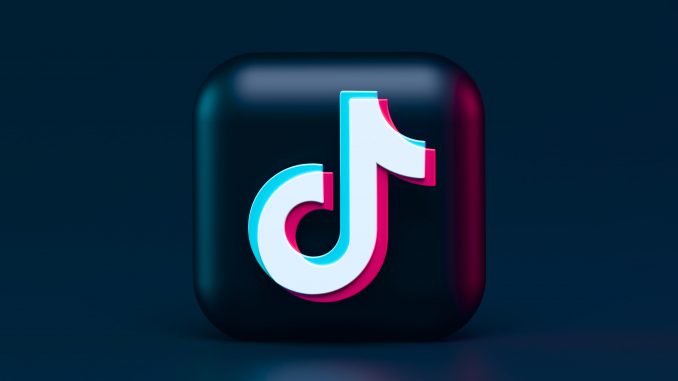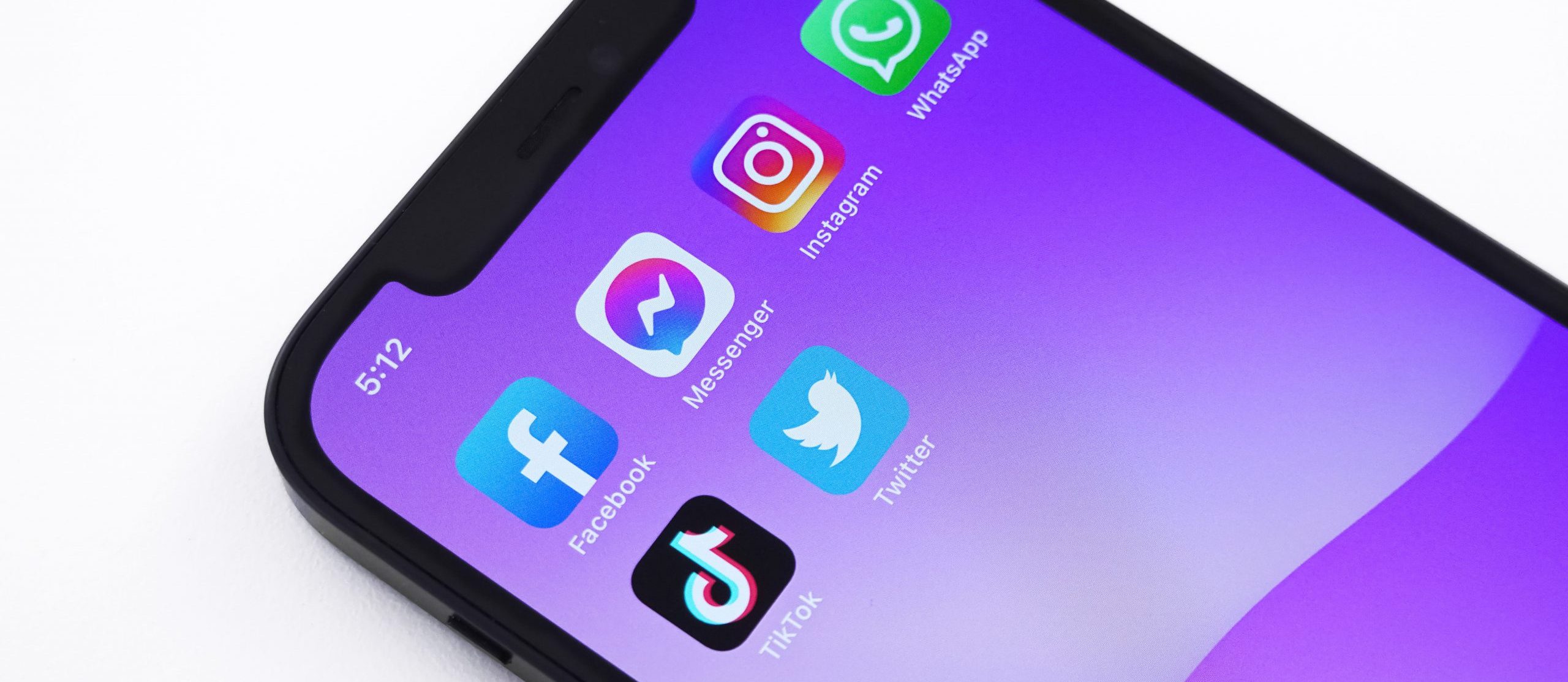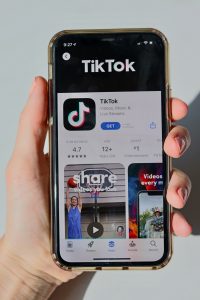

Introduction to Platform Businesses and TikTok
Technology is constantly advancing to the point where it is fundamental to peoples day-to-day activity. With this, has seen the rise of the digital era which has provided both opportunities and challenges for companies, along with the development of platform businesses. Through this strong support of digital technology, this has enabled digital platforms a new way of doing business at a low scale of costs whilst simultaneously introducing businesses to markets. The emergence of platform businesses has led to a new economy development called the sharing economy (Li et al., 2017, as cited in Stoian & Tohanean, 2021). The sharing economy generates markets that enable the exchange of goods and the emergence of new services, resulting in higher levels of economic activity. Van Dijck et al. (2018), extends this notion whereby, this transformation empowers individuals to set up a business, trade goods, and exchange information online while circumventing corporate or state intermediaries, which ultimately contributes to innovation and economic growth. In turn, there are different types of platform businesses. Specifically, social platforms are common to the pool of platform businesses, whereby they facilitate social interactions online and allow users to interact and converse with each other efficiently and easily. Social media has the ability to easily and effectively help share and give businesses exposure by reaching millions of people online. Businesses are able to grow their businesses functionally on these social media platforms, whereby social media effectively facilitates platform businesses to operate and develop on this online environment. TikTok is a social media platform business that has grown significantly and been highly successful in its operations online. TikTok commenced in 2014 as a music video creation app, formerly known as Musical.ly (Kurzrock, 2019), whereby the characteristics of the application can be subject to its success. TikTok contributes to this sharing economy through its maximisation of its sharing and promotion capabilities.

TikTok’s Operations
Sharing is the constitutive activity of social media (John, 2018). TikTok operates through a mobile video creation and sharing application that facilitates users to watch videos and encourages them to create them. Along with video production, it provides the platform for users to view, share and comment on videos created by other users. Indicated by Yang (2020), TikTok is a User-generated content platform (UGC), whereby content is produced by users, rather than the company. The success of the platform can be characterised by its immersive user experience. TikTok employs an algorithm that learns user preferences and subsequently provides a customised news feed. Videos get promoted by an algorithm which shows relevant videos to other users’ TikTok feed, even if they don’t follow the user originally. This is done through TikTok’s feature of the For You Page, whereby users receive a variety of videos relevant to their interests as a result of the algorithm. Through this algorithm, users can consistently produce video content, to further gain more followers and recognition from the community. “The implications for business means that it is free and effective advertising” (Baquita et al., 2021, p. 1), whereby businesses can create advertisements in their ability to promote their brand for free, with a great chance of exposure. Through this process of utilising the algorithm along with the nature of social media, allows for the widespread of content on TikTok. In a study conducted by Zhou (2019), discovered that users on TikTok are more willing to create and upload content on TikTok than other platforms, along with being more likely to copy, repeat, and imitate content produced by others. Furthermore, corresponding to TikTok’s success is its strong network effect. Network effects involves “the value of a platform to users is affected by the number of other participants” (Iansiti, 2021, p. 2), whereby the more people on TikTok, the more valuable the platform is. As such, when users post on TikTok, this results in more people viewing the post and in turn, allows for more users to interact with it and share it. These capabilities of TikTok have led to the success of the platform business today, with it having 700 million monthly active users worldwide as of July 2020 (Baquita et al., 2021).
How does TikTok make money?
Social media platforms all use the same means of generating income on their unique platforms, and this is done through advertising. Advertising is the key to how social media platforms generate and earn revenue, whereby they sell targeted advertising in their ability to reach a large array of people. TikTok’s main and largest source of revenue is through advertising its audience, whereby the platform’s advertising revenue is estimated at more than $16 billion a year (Yang et al., 2021). TikTok is a free application that anyone can use and download it, and as such relies on advertising for it to be successful and make profits. The platform has a huge and engaged audience and with this utilises the opportunity for TikTok to allow brands, companies and advertisers to get in front of these audiences. Advertising feeds into TikTok’s user experience, whereby they collect billions of users’ data on hand which is used to help its clients find their target audience and produces “more authentic TikTok advertisements” (Zhou, 2019, p. 19). Fundamental to attracting clients and businesses for advertising is TikTok’s user data collection. Furthermore, TikTok operates six advertising services which include topview, brand takeover, in-feed ads, branded hashtag challenge and branded effects. These services allow for clients to effectively attract their targeted audiences to ultimately boost their popularity. Alternatively, TikTok also generates income through in-app purchases. TikTok allows users to buy coins that they can use in the app, which are used as digital gifts that they can send to other users. According to Smith (2020), TikTok generated $115 million solely from in-app purchases during October.
TikTok’s Issues

Along with TikTok’s success, there has also been some concerns raised about the platform business’ content moderation. Subject to most social media platforms is the issue of regulating and monitoring information so that it’s not illegal and culturally insensitive in the context of its markets. “Platforms are not platforms without moderation” (Gillespie 2018, p. 21), whereby TikTok faces the challenges on effectively regulating users’ content in the face of its large audience. TikTok implements community guidelines that manages potentially unsafe conduct by removing the contents and deleting or banning those accounts. This allows TikTok to ensure a safe environment on the platform and removes any unsafe or unacceptable behaviours, to ultimately grow the platform and attract more users. Additionally, TikTok has also received issues in its social conduct, in particular with the safety and privacy of its users and specifically, children. TikTok was fined $5.7 million by the US government for illegally collecting the names, email addresses, pictures and locations of kids under the age of 13, which was a record penalty for violations of the nation’s child privacy law (Timberg & Romm, 2019). This issue occurring due to the platform’s ease of accessibility along with the lack of parental supervision. This is an issue that TikTok must effectively overcome to ensure the safety and privacy of its users.
Conclusion
TikTok is a platform business that has significantly grown and become highly successful through its effective capabilities and immersive user experience. The free application allows users to watch and create videos, and facilitates the ability to reach a large audience through its applicable algorithm. TikTok efficiently contributes to this sharing economy through empowering its promotional and sharing processes. However, users should be aware and cautious of the content they share and the activity they engage on the platform, whereby TikTok is continually collecting information and using it.
References:
Baquita, N., Putra, R., Farres, S., Adha, R., Herlambang, K. (2021). The Implications of TikTok as a Social Media on Customer Attraction. Retrieved from https://www.researchgate.net/publication/349394242_THE_IMPLICATIONS_OF_TIKTOK_AS_A_SOCIAL_MEDIA_ON_CUSTOMER_ATTRACTION
Gillespie, T. (2018). Custodians of the Internet: Platforms, Content Moderation, and the Hidden Decisions That Shape Social Media, 21–23. New Haven: Yale University Press. Retrieved from https://www.researchgate.net/publication/327186182_Custodians_of_the_internet_Platforms_content_moderation_and_the_hidden_decisions_that_shape_social_media
Iansiti, M. (2021). Assessing the Strength of Network Effects in Social Network Platforms. Harvard Business Review 21-086. Retrived from https://www.hbs.edu/ris/Publication%20Files/21-086_a5189999-6335-4890-b050-a59a4b665198.pdf
John, Nicholas A. (2018). Sharing Economies. In The Age of Sharing. Cambridge: Polity. pp. 69-97.
Kurzrock, E. (2019). Intensified Play: Cinematic study of TikTok mobile app. Retrieved from https://www.researchgate.net/publication/335570557_Intensified_Play_Cinematic_study_of_TikTok_mobile_app
Smith, D. (2020). TikTok Generated $115 Million From In-App Purchases Alone In October. Digital Music News. Retrieved from https://www.digitalmusicnews.com/2020/11/05/tiktok-generates-115-mm/
Stoian, C & Tohanean, D. (2021). Platform Business Models – A Case Study of the Technology Industry. Journal of Economics and Management Sciences. 4. p18 https://j.ideasspread.org/index.php/jems/article/view/803/705
Timberg, C., & Romm, T. (2019). The U.S. government fined the app now known as TikTok $5.7 million for illegally collecting children’s data. Retrieved April, 2019, from https://www.washingtonpost.com/technology/2019/02/27/us-government- fined-app-now-known-tiktok-million-illegally-collecting-childrens-data/
Van Dijck, J., Poell, T. & de Waal, M. (2018). The Platform Society. Oxford: Oxford University Press, pp. 5-32 (‘The Platform Society as a Contested Concept’). Retrieved from https://sydney.primo.exlibrisgroup.com/permalink/61USYD_INST/1c0ug48/alma991017314609705106
Yang, Y. (2020). Understanding Young Adults’ TikTok Usage. Retrieved from https://communication.ucsd.edu/_files/undergrad/yang-yuxin-understanding-young-adults-tiktok-usage.pdf
Yang, J., Zhang, J., Zhang, Y. (2021). Influencer Video Advertising in TikTok: MIT Initiative on the Digital Economy 2021 (Vol.4). Retrieved from https://ide.mit.edu/wp-content/uploads/2021/07/Research-Brief_07-02-21.pdf
Zhou, Q. (2019). Understanding User Behaviors of Creative Practice on Short Video Sharing Platforms – A Case Study of TikTok and Bilibili. Retrieved from https://etd.ohiolink.edu/apexprod/rws_olink/r/1501/10?clear=10&p10_accession_num=ucin155421202112545